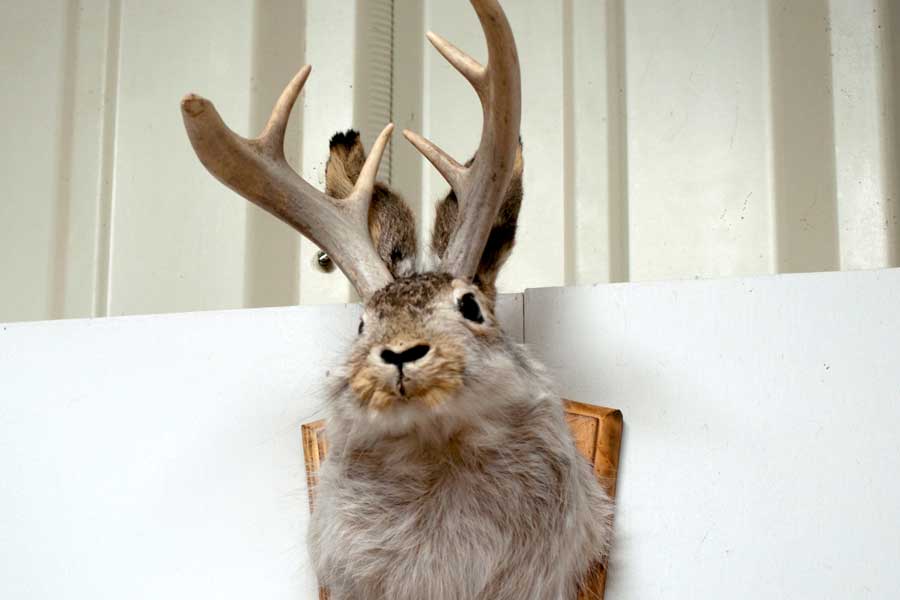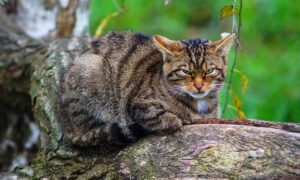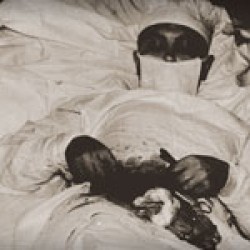The jackalope is a mythical animal of North American folklore (described as a fearsome critter). A jackrabbit with antelope horns, the word jackalope is a portmanteau of jackrabbit and antelope. There are many jackalope taxidermy mounts, including the original which are made with deer antlers!
In the 1930s, Douglas Herrick and his brother, hunters with taxidermy skills, popularized the American jackalope by grafting deer antlers onto a jackrabbit carcass and selling the combination to a local hotel in Douglas, Wyoming. Thereafter, they made and sold many similar jackalopes to a retail outlet in South Dakota, and another taxidermist continues to manufacture the horned rabbits in the 21st century.




References to horned rabbits may originate in sightings of rabbits affected by the Shope papilloma virus, named for Richard E. Shope, M.D., who described it in a scientific journal in 1933. Shope initially examined wild cottontail rabbits that had been shot by hunters in Iowa and later examined wild rabbits from Kansas. They had “numerous horn-like protuberances on the skin over various parts of their bodies. The animals were referred to popularly as ‘horned’ or ‘warty’ rabbits.”
Legends about horned rabbits also occur in Asia and Africa as well as Europe, and researchers suspect the changes induced by the virus might underlie at least some of those tales.
Folklorists see the jackalope as one of a group of fabled creatures common to American culture since Colonial days. These appear in tall tales about hodags, giant turtles, Bigfoot, and many other mysterious beasts and in novels like Moby-Dick. The tales lend themselves to comic hoaxing by entrepreneurs who seek attention for their products, their persons, or their towns
Read more: The Truth Behind the Jackalope and Those Who Hunt the Elusive Warrior Rabbit
Wikipedia: Jackalope













